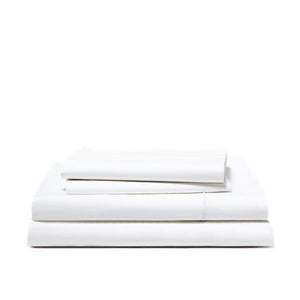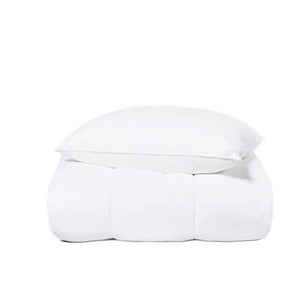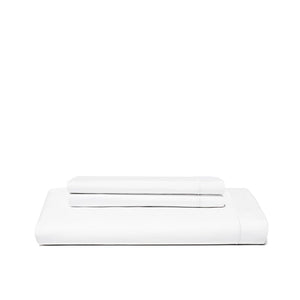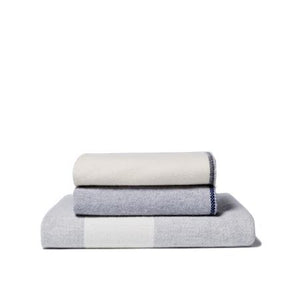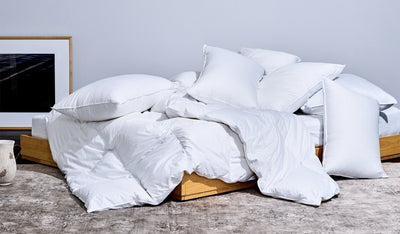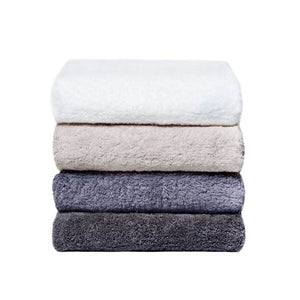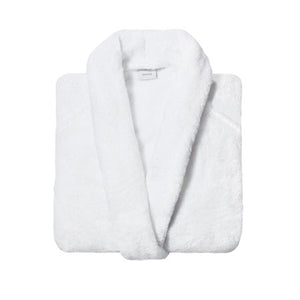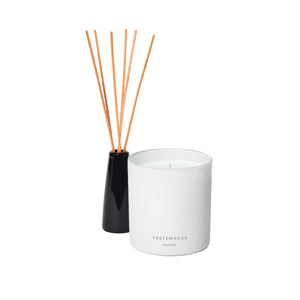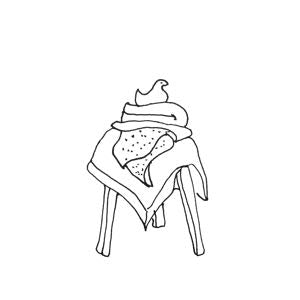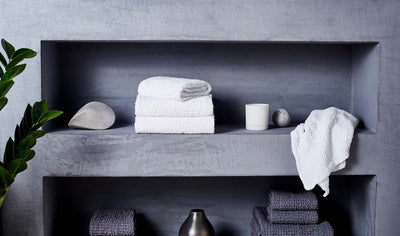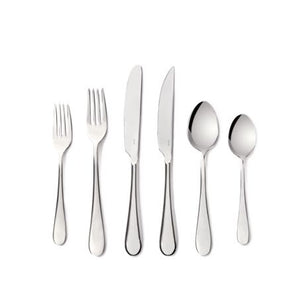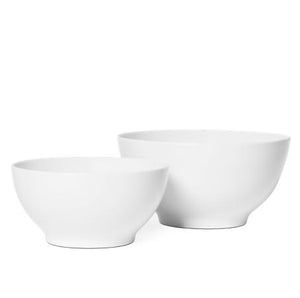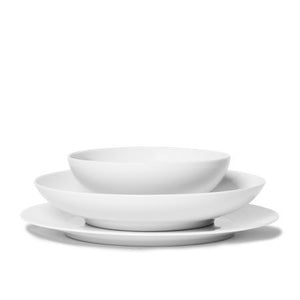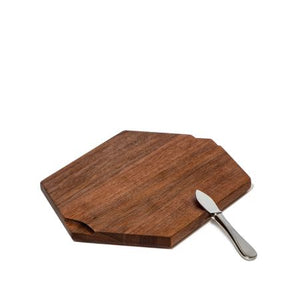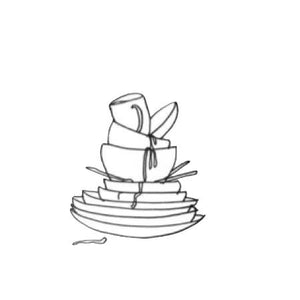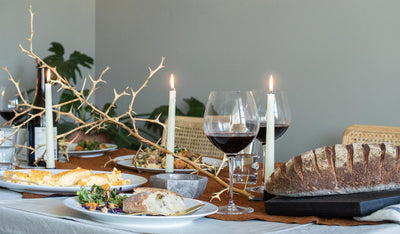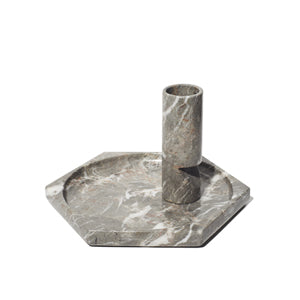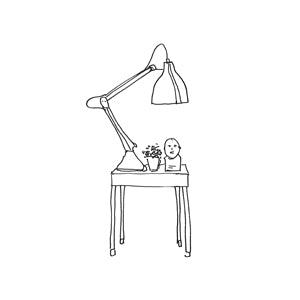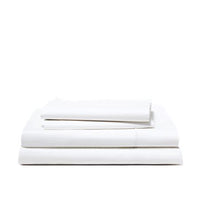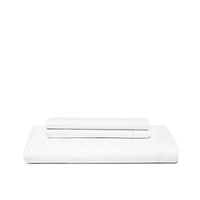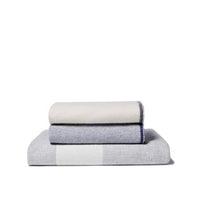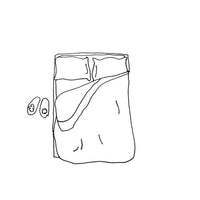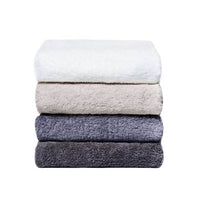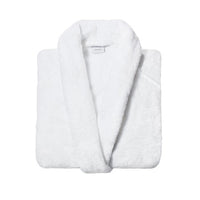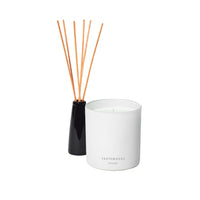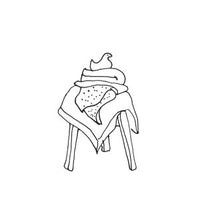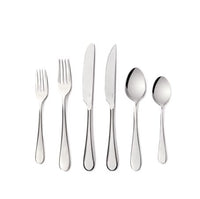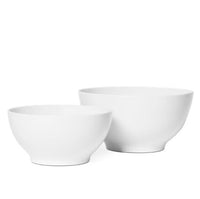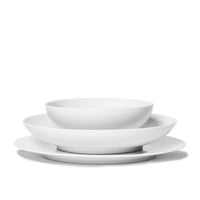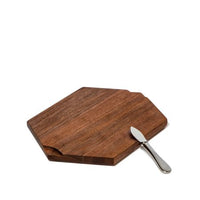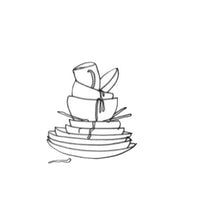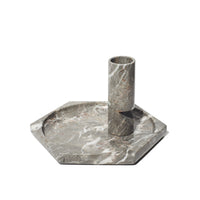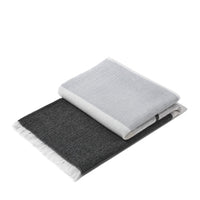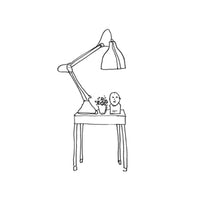When it comes to bedding, the terms "pillow sham" and "pillowcase" are often used interchangeably, but they are not the same thing.
Understanding the difference between these two types of pillow coverings can help you choose the right one for your bedding needs.
A pillowcase is a simple covering that slips over your pillow to protect it from dirt, oils, and other substances.
Pillowcases are typically made of the same material as your sheets and come in a variety of colors and patterns.
On the other hand, a pillow sham is a decorative covering that is meant to be placed over your pillow for aesthetic purposes.
Shams are often made of fancier materials than pillowcases, such as silk or velvet, and may feature intricate designs or embroidery.
Curious to learn more? Continue reading to explore our latest blog and discover which pillow covering is right for you!
Understanding Pillow Shams

Pillow shams are an essential bedding accessory that can add a touch of elegance and sophistication to your bedroom decor.
They are often used for decorative purposes and can complement your bedspread or duvet cover.
In this section, we will explore the definition and purpose of a sham, common types of pillow shams, materials and fabrics used for shams, and design elements of pillow shams.
Definition and Purpose of a Sham
A pillow sham is a decorative cover that is designed to be placed over a pillow.
It is similar to a pillowcase, but it is often larger and has a decorative front.
Shams can be used to add a pop of color or pattern to your bedding, and they can also help to protect your pillows from dirt and dust.
Common Types of Pillow Shams
Pillow shams come in a variety of sizes, including standard, euro, king, and boudoir.
Standard shams are the most common and are designed to fit standard size pillows.
Euro shams are larger and are typically used to prop up pillows while sitting in bed.
King shams are designed to fit king-size pillows, while boudoir shams are smaller and often used for decorative purposes.
Materials and Fabrics for Shams
Pillow shams can be made from a variety of materials, including cotton, linen, silk, and Tencel™ Lyocell.
Cotton is a popular choice for shams because it is soft, durable, and breathable.
Linen shams can add a touch of rustic charm to your bedding, while silk shams are luxurious and elegant.
Tencel™ Lyocell shams are eco-friendly and offer a silky smooth feel.
Design Elements of Pillow Shams
A flange is a decorative border that is sewn around the edge of the sham, while a cording is a decorative rope that is sewn into the seam.
Embroidery can add intricate designs or monograms to your shams, while quilting can add texture and depth.
Exploring Pillowcases

When it comes to a good night's sleep, your pillowcase can make a big difference.
Not only do they protect your sleeping pillow from dirt and oils, but they also provide comfort and can affect your hair and skin.
In this section, we will explore the definition and function of a pillowcase, the varieties available, materials and weaves used, and features to consider when purchasing one.
Definition and Function of a Pillowcase
It also provides a comfortable surface for you to rest your head on while sleeping.
Pillowcases come in different sizes, with the standard size being 20 by 26 inches, and are available for queen and king-size pillows as well.
Varieties of Pillowcases
There are different varieties of pillowcases available, each with its own unique features.
Some pillowcases have a simple design, while others are more decorative.
Pillowcases may have a plain or patterned design, and some may have a flange or ruffle at the opening for a decorative finish.
Pillowcase Materials and Weaves
Pillowcases are made from various materials, including cotton, sateen, linen, silk, percale, and satin.
Cotton is the most popular material for pillowcases due to its durability, breathability, and softness.
Sateen is a cotton weave with a silky feel and a slight sheen.
Linen is a breathable and durable material that becomes softer with each wash.
Silk pillowcases are known for their smooth texture, which can help prevent hair breakage and wrinkles.
Percale is a crisp and cool cotton weave, while satin is a smooth, shiny, and luxurious material.
Comparing Pillow Shams and Pillowcases

Primary Differences
Pillow shams and pillowcases are both used to cover pillows, but they have some primary differences.
Pillowcases are designed to protect the pillow and keep it clean while you sleep.
They usually have an opening on one end and are made from soft, breathable materials like cotton or linen.
Pillow shams, on the other hand, are primarily decorative and are meant to add a touch of style to your bed.
They often have a flange or decorative edge and are made from more luxurious materials like silk or velvet.
Usage and Functionality
When it comes to sleeping, pillowcases are the way to go.
They are designed to be soft and comfortable against your skin, and they protect your pillow from sweat, oil, and other debris that can accumulate over time.
Pillow shams, on the other hand, are not meant to be slept on.
They are more of a decorative prop that you can use to add some style to your bed.
While they can be used for sleeping, pillowcases are more comfortable and may not meet your sleep needs.
Care and Maintenance
Both pillow shams and pillowcases require regular washing to keep them clean and fresh.
Pillowcases can usually be washed in the washing machine along with your other bedding, and they often come with a care label that provides instructions for washing and drying.
Pillow shams, on the other hand, may require more delicate care due to their decorative nature and the materials they are made from.
Some shams may need to be dry cleaned or hand washed to avoid damage.
Selecting the Right Sham and Pillowcases for Your Needs

When it comes to selecting the right sham and pillowcases, there are several factors to consider. The right size, style, and material can make all the difference in achieving a comfortable and aesthetically pleasing bedroom.
Size and Fit Considerations
The first thing to consider when selecting a sham or pillowcase is the size and fit.
It's important to choose the right size to ensure a comfortable fit for your pillows.
Standard pillows typically measure 20 x 26 inches, while king-sized pillows measure 20 x 36 inches.
Make sure to choose a sham or pillowcase that matches the size of your pillow to ensure a proper fit.
Aesthetic and Style Choices
Another important factor to consider when selecting a sham or pillowcase is the aesthetic and style.
Shams are typically used for decorative purposes, so it's important to choose a style that complements the overall look of your bedroom.
Pillowcases, on the other hand, are more functional, but they can still add a touch of style to your bedding.
Consider choosing a color or pattern that matches your bedding or adds a pop of color to your room.
Comfort and Material Preferences
Finally, it's important to consider your comfort and material preferences when selecting a sham or pillowcase.
Shams are typically made from decorative fabrics like silk, velvet, or linen, while pillowcases are typically made from soft, breathable materials like cotton or bamboo.
Consider your personal preferences for comfort and choose a material that feels soft and comfortable against your skin.
Accessorizing with Pillow Shams and Pillowcases

When it comes to accessorizing your bedroom, pillow shams and pillowcases are a great way to add some flair to your bedding.
With a variety of styles, colors, and patterns available, you can easily create a cohesive decor theme or mix and match for visual interest.
Here are some practical tips for picking the right accessories for your bedding.
Creating a Cohesive Bedroom Decor
If you want to create a cohesive decor theme in your bedroom, start by picking a color scheme or pattern that you love.
You can then choose pillow shams and pillowcases that complement your bedding and tie everything together.
For example, if you have a solid color comforter, you could choose patterned pillow shams and pillowcases that incorporate that color.
If you have a patterned comforter, you could choose solid color pillow shams and pillowcases that match one of the colors in the pattern.
Mixing and Matching for Visual Interest
If you prefer a more eclectic look, you can mix and match pillow shams and pillowcases for visual interest.
You can choose different patterns, colors, and textures that complement each other.
For example, you could pair a floral patterned pillow sham with a geometric patterned pillowcase.
Just make sure that the colors and patterns work well together and don't clash.
Practical Tips for Bedding Accessories
When it comes to picking pillow shams and pillowcases, there are a few practical tips to keep in mind.
First, make sure that the size of the pillow sham or pillowcase matches the size of your pillow.
Standard shams and standard pillowcases are the most common sizes, but there are also euro shams and king shams available.
Second, consider the flanges on the pillow shams.
Flanges are the decorative edges that frame the pillow.
Some pillow shams have flanges that are purely decorative, while others have flanges that provide extra support for the pillow.
Finally, don't forget about decorative pillows. Decorative pillows can add another layer of color and texture to your bedding.
Protecting Your Pillow Sham and Pillowcases
Preventing Wear and Tear
To keep your pillow sham and pillowcases looking new, it is important to take proper care of them.
One way to prevent wear and tear is to avoid sleeping on them directly. Instead, use a separate pillowcase or cover to protect them from oils and sweat.
Additionally, avoid using harsh detergents and fabric softeners, as they can damage the fibers and cause fading.
Extending the Life of Your Pillow Sham and Pillowcases
To extend the life of your pillow sham and pillowcases, it is important to wash them regularly.
However, it is recommended to wash them separately from other clothing items to prevent damage from zippers and buttons.
Use a mild detergent and avoid using bleach or hot water, as they can cause fading and shrinkage.
After washing, hang them to dry or use a low-heat setting on your dryer.
Choosing Durable Bedding Materials
When selecting pillow shams and pillowcases, make sure to choose durable materials that can withstand frequent washing and use.
Cotton is a popular choice due to its softness and durability, while silk and satin are more delicate and require special care.
Additionally, consider the thread count when selecting bedding, as higher thread counts generally indicate a softer and more durable material.
Frequently Asked Questions
What is the difference between a pillow sham and a pillowcase?
A pillow sham is a decorative cover that is placed over a pillow. It is often used to add a finishing touch to the bed and can come in a variety of designs and styles.
A pillowcase, on the other hand, is a functional cover that is used to protect the pillow from dirt, oils, and sweat. It is typically made of a soft, breathable material and is designed to be easily removed and washed.
How do you properly use a pillow sham?
To properly use a pillow sham, you should first insert your pillow into the sham.
Then, place the sham on top of your bedding, either as the first layer or as a decorative accent.
Be sure to fluff the pillow inside the sham to give it a full, plump look.
How do pillow shams and pillowcases differ in their care and maintenance?
Pillow shams and pillowcases differ in their care and maintenance.
Pillowcases are designed to be easily removed and washed, while pillow shams are often more delicate and require special care.
It is important to read the care instructions on the label before washing your pillow sham to ensure that it is properly cared for.
In bed arrangement, where should the pillow shams be placed?
Pillow shams can be placed in a variety of positions on the bed, depending on your personal preference.
Some people prefer to place them in front of the pillows they sleep on, while others prefer to place them behind the sleeping pillows for a layered look.
Ultimately, the placement of your pillow shams is up to you and should be based on your personal style and preference.
